In the Department of Interpretation, we like to refer to the sort of distracted, “Hey, did you know?” conversations as “sinkholes.”
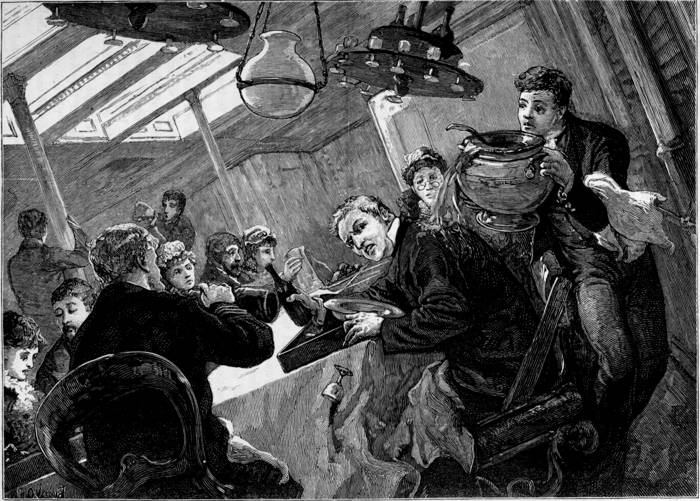
Many might also refer to them as falling down a rabbit hole, but we feel that the ground giving way is a more realistic description.
As we are the department responsible for content and programming both in the galleries and out, we spend quite a bit of time researching. This often turns into a treasure or scavenger hunt as we glean information from primary sources and the Museum’s Collection.
You might remember an often assigned essay topic from high school or college themed “Who Would You Invite to Dinner from History?” It’s the sort of topic that would pop up in conversation, so we thought it might be an interesting activity to explore.
So, welcome readers to our virtual office. We’d love to hear how you think this dinner party would go, what you learned, and who you would invite should you host the next historical get-together. Please comment below! And thank you for coming to our table.
Wisteria Perry, Manager of Interpretation and Community Outreach
I would like to invite Raye Jean Montague as my guest to our table. She is one of the many known as “Hidden Figures” and had a long career with the US Navy that spans the development and expansion of computer technologies. In 1971, Raye Jean became the first person to design a ship using a computer in under nineteen hours. Her design revised the selecting and printing of ship specifications and produced the first draft for FFG-7 Frigate (Oliver Hazard Perry or Perry-class ship). She received numerous awards over the years and worked on USS Dwight D. Eisenhower, the navy’s first landing craft helicopter-assault ship and the Seawolf-class submarines. Sadly, Raye Jean Montague passed away on October 10, 2018. However, she is a Hidden Figure no more.


Marc Nucup, Public Historian
I imagine having dinner with General Marie-Joseph Paul Yves Roch Gilbert du Motier, Marquis de La Fayette, would have to be a fascinating experience. He would certainly have my undivided attention. This man was like a son to George Washington, met most of the Founding Fathers, and even hung out with Napoleon. He fought in the American Revolution, including locally in Virginia, as well as witnessed the French Revolution and Napoleonic Wars.
As La Fayette was French, it would be important to make sure dinner suited him. Apparently when he dined at Gadsby’s Tavern in Alexandria the entree was duck in orange sauce. So I propose we serve Chinese food. Gotta show the Marquis how far the country he helped found has come. The presentation would be carefully planned and everything would be of the highest quality, down to the fancy china. The choice of table setting would be paramount, so I would ask for special dispensation to use the blue Staffordshire porcelain in the Museum Collection that was commissioned to celebrate the 1824 tour of the United States made by La Fayette.

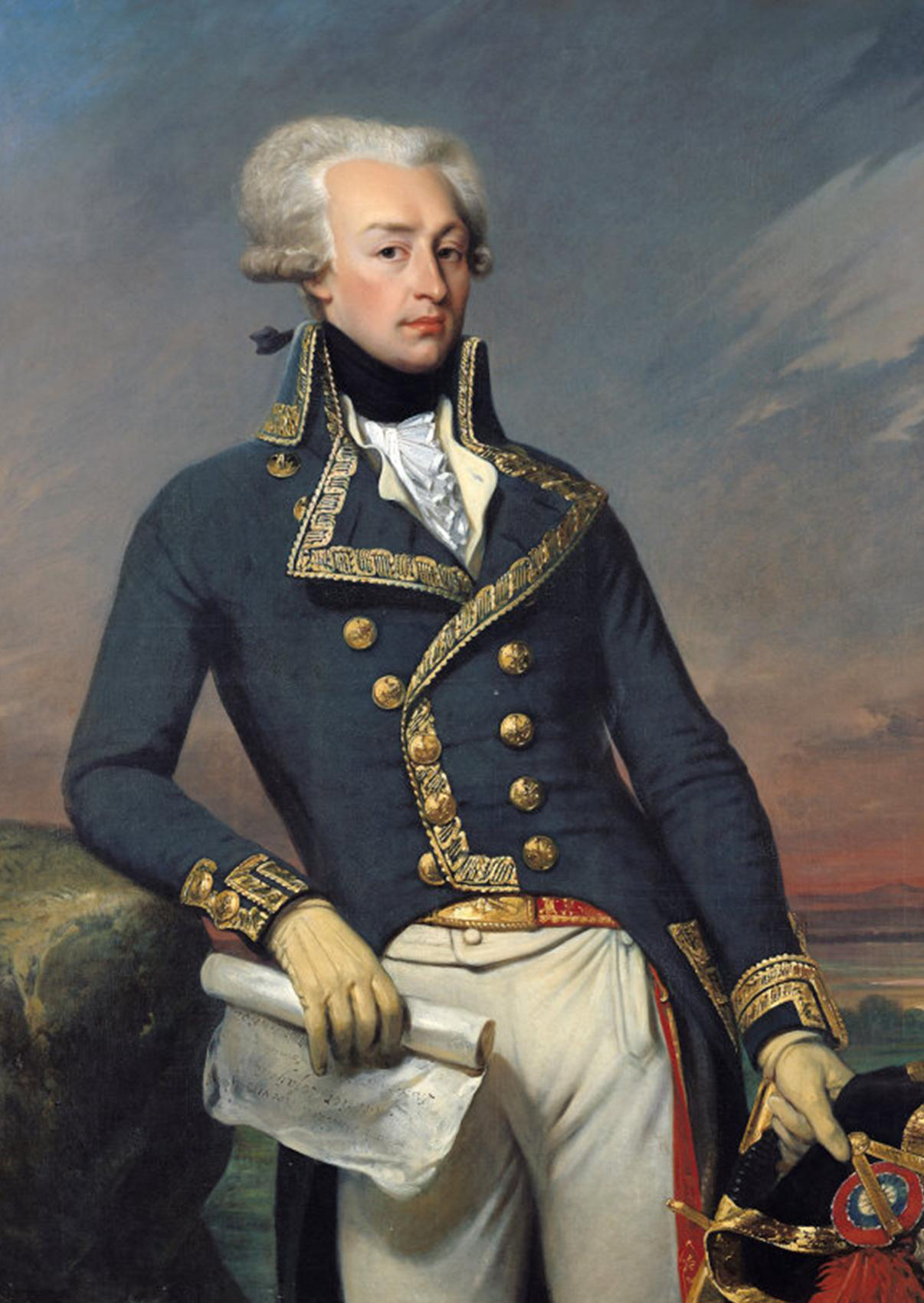
Lauren T. Furey, Manager of Visitor Engagement
Last September while researching the Portsmouth Dockyard in England for our “Gallery Crawl” Museum event, our Director of Collections made a comment about Mary Lacy. I said, “Who?” and she referenced a book that Lacy had written after she had a very interesting experience. After learning more about her, it really just prompted more questions. So I would like to invite Mary Lacy (1740-1781) to our dinner party. Mary was shunned by the man she loved and at 19 ran away from home as she was not happy with her options. Mary Lacy wrote in her published book The Female Shipwright: or Life and Extraordinary Adventures of Mary Lacy, that in 1759: “. . . a thought came into my head to dress myself in men’s apparel and set off by myself.” Thus, she became William Chandler. This shows she had a sense of humor since a chandler is also a “dealer in supplies and equipment for ships and boats.”
Mary dressed as a man and for four years served as a carpenter’s assistant on several Royal Navy ships, including HMS Sandwich. In 1763 Mary decided to apply to become an apprentice shipwright! Seven years later, she became the only known, fully credentialed, female shipwright at the Portsmouth Dockyard. After spending 17 years posing as a man, Lacy applied for a pension in 1772 under her true name and was granted £20 a year. How amazing is that? I would love to find out how she managed to hide her true identity for so many years. Dinner would probably have to be some sort of seafood dish without a sea biscuit in sight! I also would like to see if she had a leftover box of her books hidden somewhere because we do not have one in our Collection!
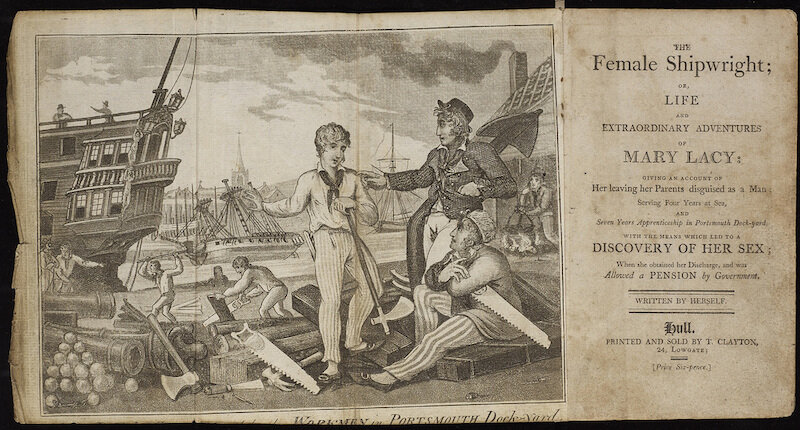
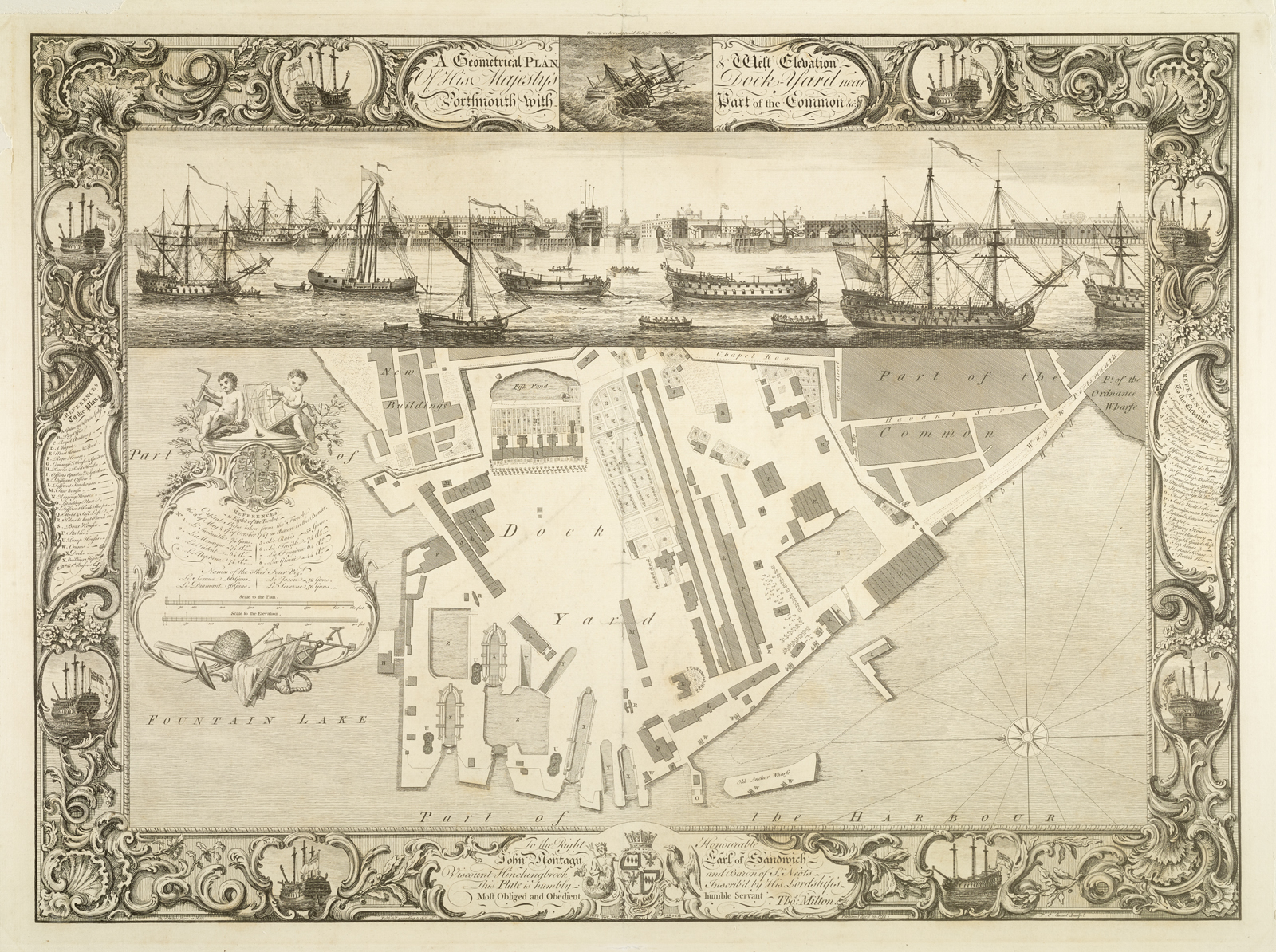
1934.1679.000001
Erika Cosme, Content and Interpretation Developer
My dinner guest would be Hernán Cortes (also known as Hernand, Hernando), the 16th-century Spanish conquistador. He is best known for conquering the powerful Aztec Empire, which ultimately became present-day Mexico. There were many great conquistadors, but Cortes had a drive for riches and power that, for me, makes him an exciting person with whom to have a conversation. He was a determined man who fought with only one goal in mind – victory! It is even said that when he and his men first reached Mexico, he had all the ships destroyed so that they had no other choice than to succeed or die. Retreat was not an option. That was a bold move, but proved that Cortes was resolute in his mission to conquer the Aztecs. What was he thinking at that time? Was there any fear when he made that decision? It would seem not, but hearing what was going through his mind would be a great insight into his leadership and resolve.
During dinner, it would be interesting to hear his description of the people he conquered. Mesoamerican cultures differed greatly from the Spanish Empire, especially regarding religion. Cortes was Catholic. Mesoamericans worshiped many gods. While plundering the lands for gold and other riches, part of his duty was to convert native inhabitants to Catholicism. Still, hearing his stance on the practices and rituals of the natives would still be fascinating to discuss. Hernán Cortes was a skilled leader, who often made bold decisions. The dinner conversation would definitely not be boring. He may get a bad rap today, but in his time, he was a hero to the Spanish Empire.

1954.0490.000001
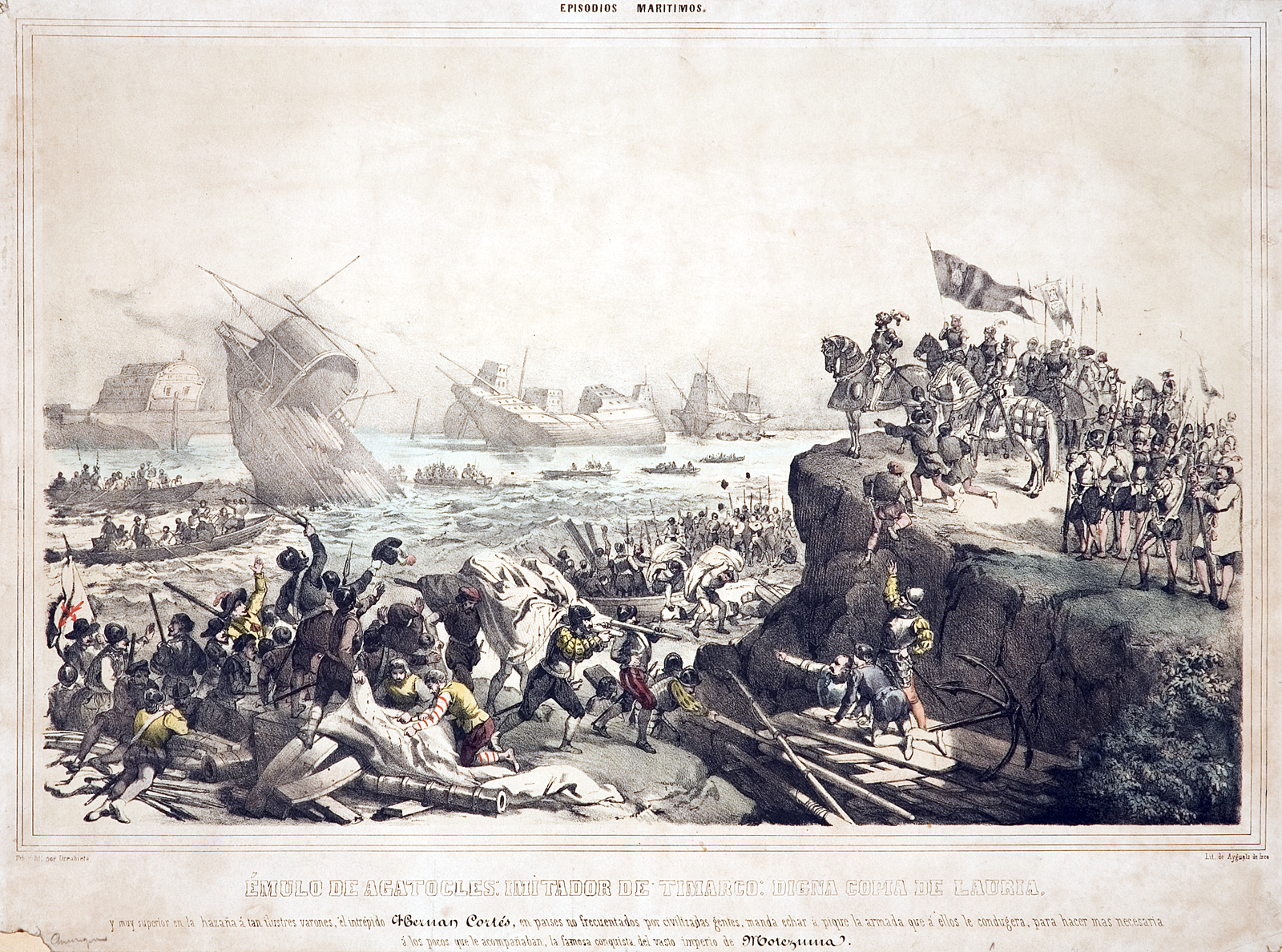
1944.0062.000001
This print praises the exploits of Spanish conquistador Hernando Cortez, shown here sinking his fleet before marching inland to attack Montezuma’s Aztec empire in November 1519.
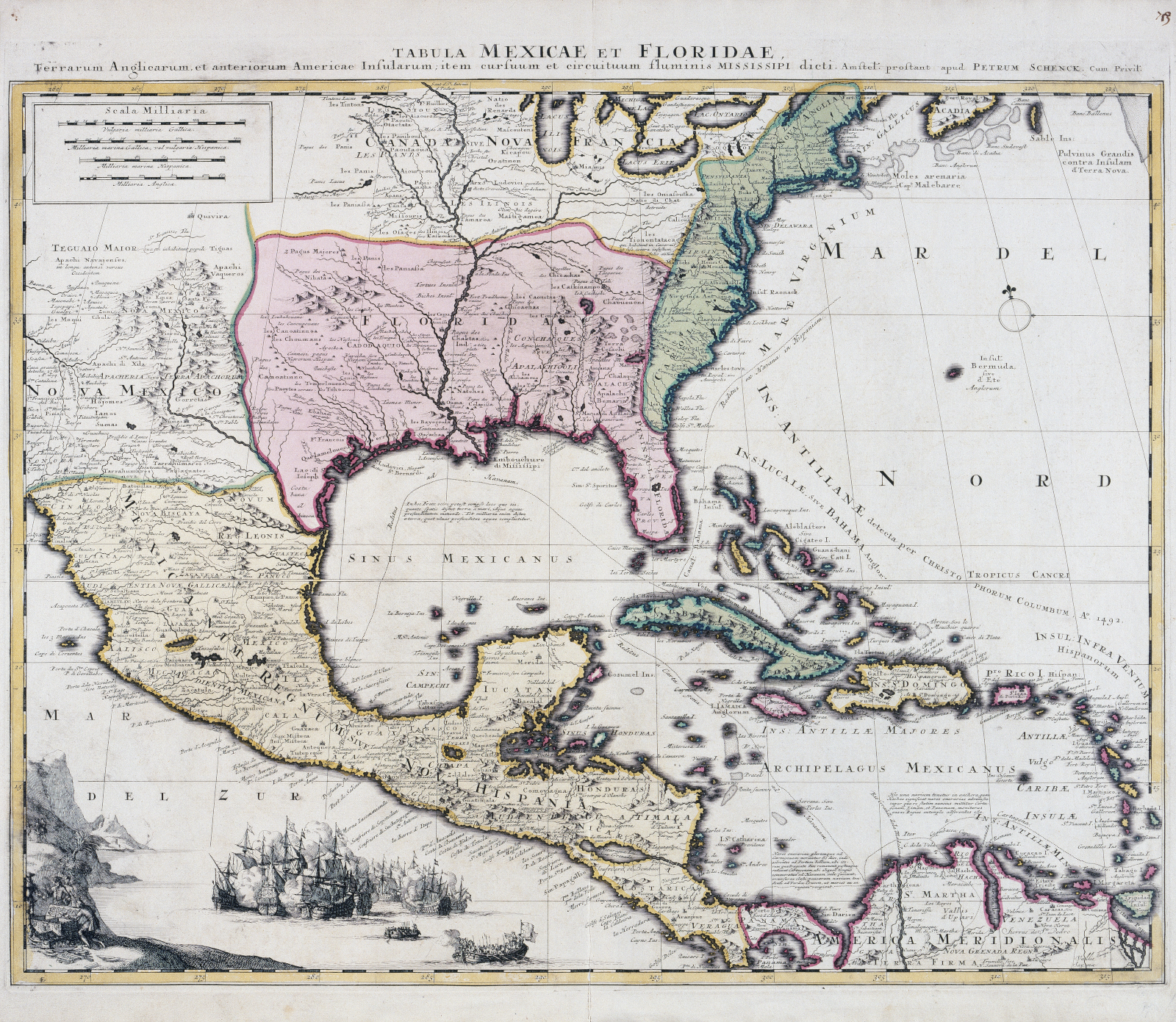
Julie Murphy, Writer/Researcher
My guest at this historic dinner party will be explorer/soldier/poet/courtier/author Sir Walter Raleigh, a real Renaissance man! I can’t wait to see what he will wear – I hope lots of ruffles and pearl-studded brocade, and his sword, of course. Being a native North Carolinian, this Elizabethan dude has long fascinated me.
Part of Raleigh’s legacy is popularizing tobacco in England since returning colonists brought the stuff back from the New World to share with Queen Elizabeth’s court. For many generations my mother’s family farmed tobacco not far from the capital city of Raleigh. As a girl it was a summertime treat for my great-uncle to take me along to the tobacco warehouse auctions. I can still smell the intoxicating fragrance of “brown gold.” So, I will bring my guest a little gift: a tin of Sir Walter Raleigh brand pipe tobacco. (I wonder if he realizes the Beatles sing about him in Lennon’s tune, “I’m So Tired”?)
I’ve always wondered how in all his voyaging around the seas he never set foot on the land that is now North Carolina and Virginia. I wonder what he thinks happened to the “Lost Colonists.” And I wonder what Raleigh and his circle thought when John White returned from the colonies with those iconic illustrations of the native peoples. (I learned so much about them when we hosted Larry Tise last fall. He lectured about Theodore de Bry’s colorized engravings that included White’s work.And Lauren and I both caved and bought his glorious $$$ book.)
His devotion to Queen Elizabeth intrigues me. When he was in her favor she was very, very good to him, granting him worldly goods, land, important titles, and the like. I’d like to ask him what in the world was he thinking when he secretly married Bess, one of the queen’s attendants! Let us say, the queen was not pleased: off to the Tower of London, the both of you.
I do hope he knows just how much his wife loved him… After Raleigh was executed by beheading, Bess claimed his head, had it embalmed, and kept it in a jar until her death. (I guess I won’t ask him about that detail while dining!) Speaking of dining, there will be lots of potatoes on the menu. Some say Raleigh introduced the potato to Ireland. That is not widely accepted but, since I am Irish and do love potatoes, they will be served in a variety of satisfying ways.
Note: all you fellow Romantics, read more about Sir Walter Raleigh’s wife Bess and how she treasured his head here: Smithsonian Magazine
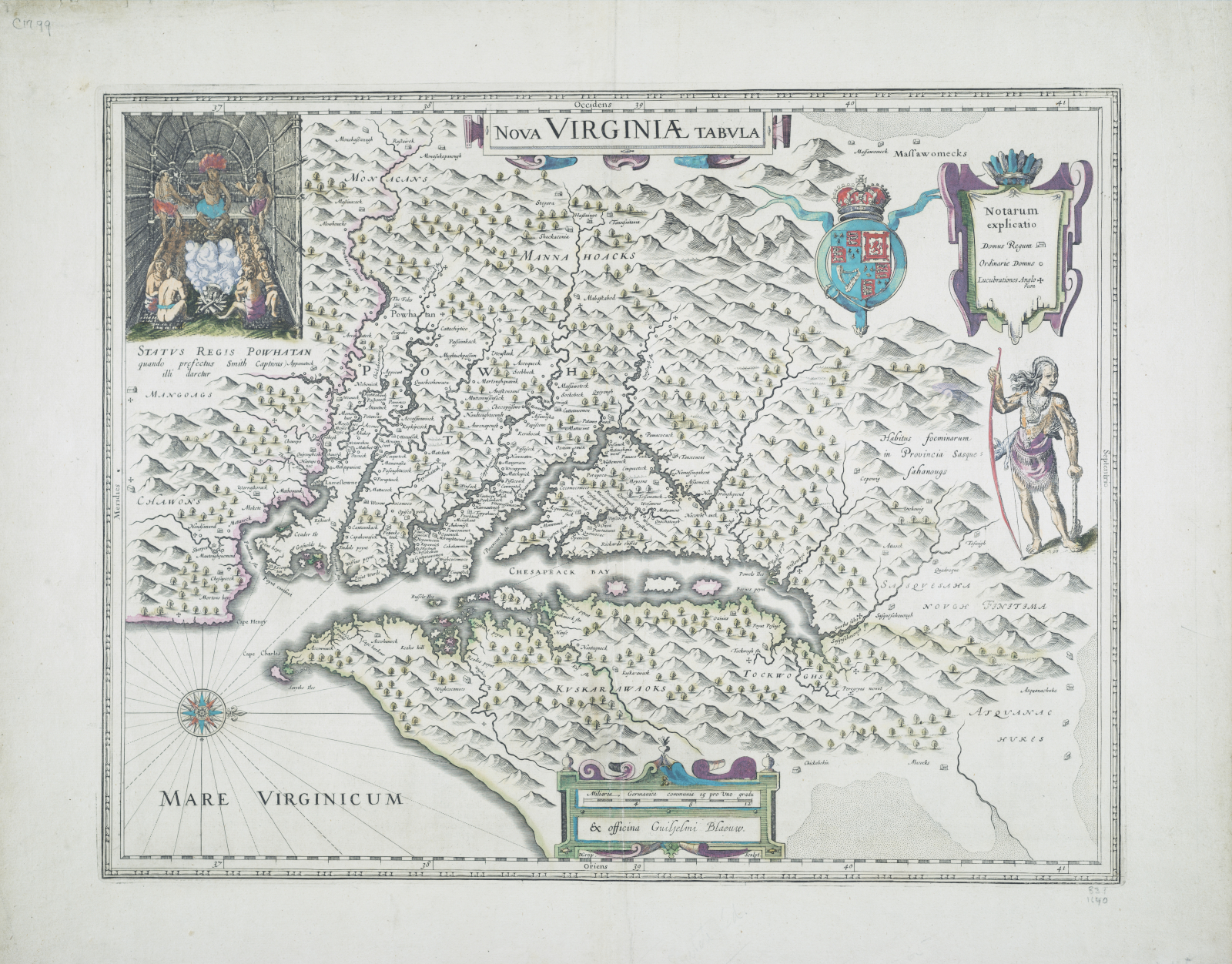
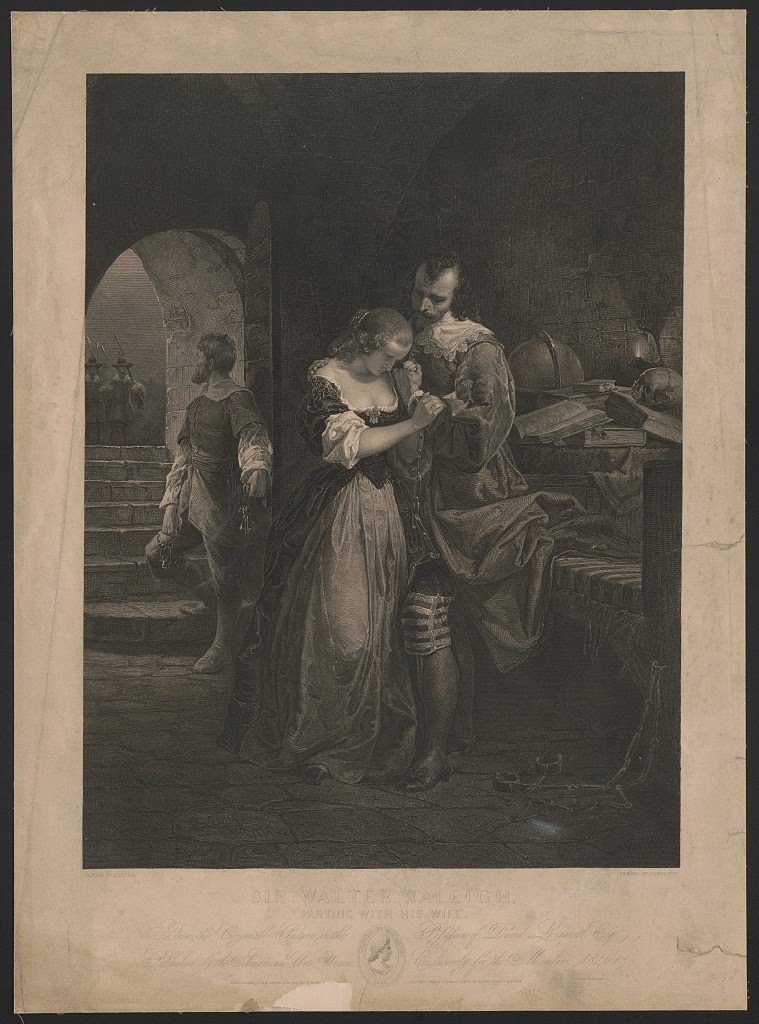

J. Houbraken, engraver, 1739. Print shows drawings symbolic of his explorations and beheading. 1951.0491.000001